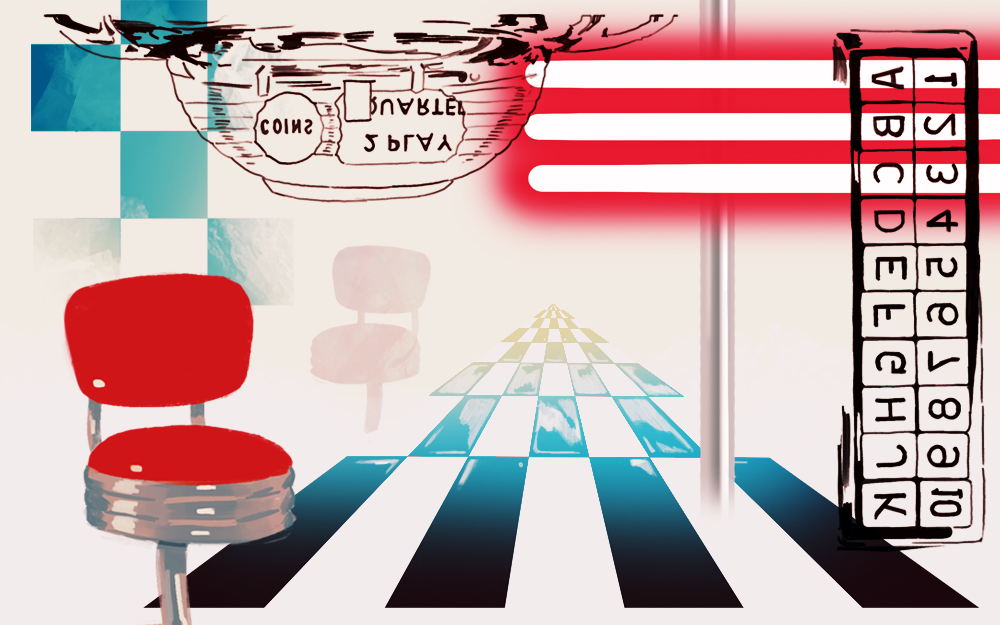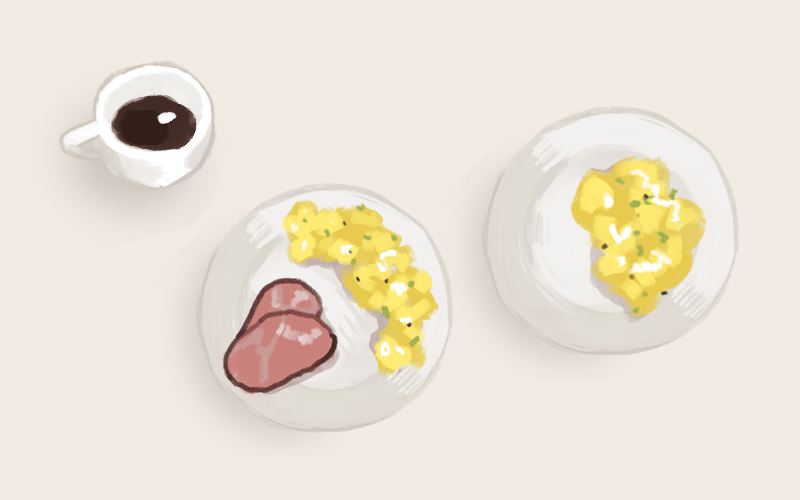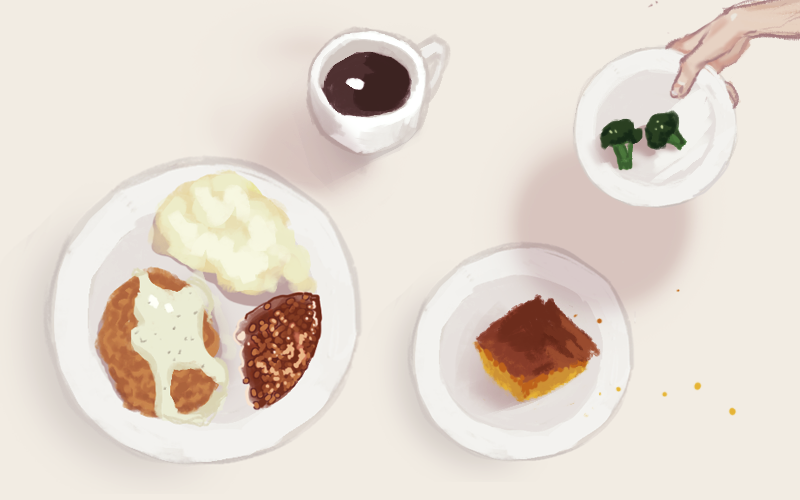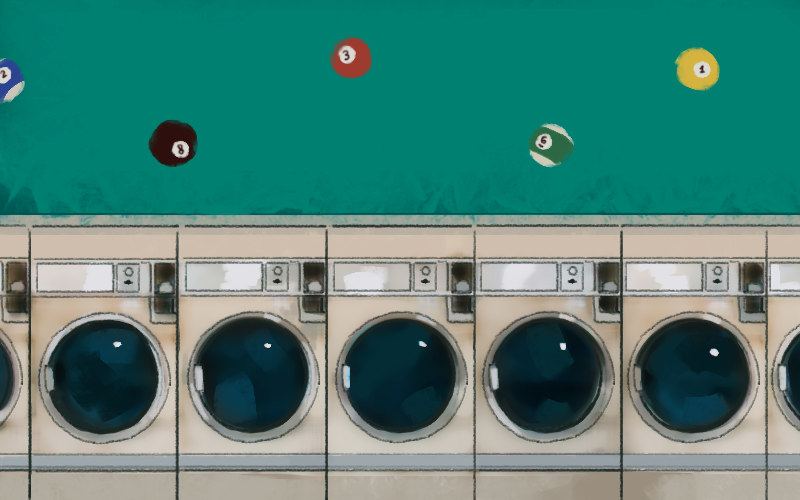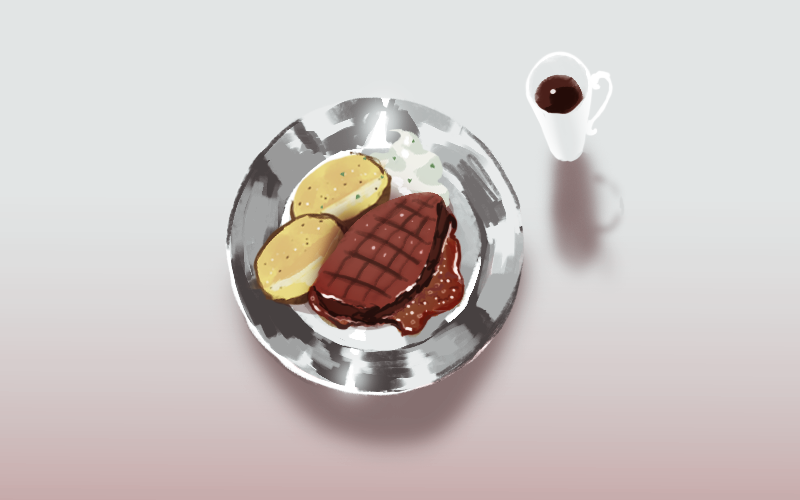Notional manifestations of working-class identity become evident through the recurrent appearance of diners in Cormac McCarthy’s largest and most personal novel, Suttree. Sometimes they are called lunch counters, or cafeterias, or drugstores, but the appellation is not what matters. What is essential is the subsistence repast and how McCarthy conjures these places as surrogate homes for the novel’s peripatetic protagonist, Cornelius Suttree, and his cohorts. Set directly in the middle of the twentieth century, the diners of Suttree evoke suitability, affordability, and community.
After it inherited an American twist on Ernest Hemingway’s clean well-lighted place and was put to canvas by Edward Hopper, and before it became an abiding symbol of nostalgia or of efficiency or of convenience, before its instantiation in visual narratives from Grease to Happy Days, or Diner to Five Easy Pieces, or from the films of Quentin Tarantino and Martin Scorsese to the television series Seinfeld, The Sopranos, and Mad Men, the diner existed alongside the pool hall, the laundromat, the barroom, and the motel as one of the defining pillars of mid-century working-class iconography. These places offer shelter, sustenance, sanctuary, and shared humanity.
There is also a biographical component here that is far less prevalent in McCarthy’s other fictions. The 1992 New York Times Magazine piece “Cormac McCarthy’s Venomous Fiction” by Richard B. Woodward presents this pre-fame McCarthy as “the best unknown novelist in America,” a man who “cuts his own hair, eats his meals off a hot plate or in cafeterias and does his wash at the Laundromat.” Kenneth Lincoln’s Cormac McCarthy: American Canticles complements this by reflecting on Woodward’s cross-country journey with McCarthy, remarking that their trip consisted of Woodward riding shotgun alongside McCarthy “across the Texas-Mexican desert in a Ford pickup, slumming through El Paso pool halls and stopping in local diners.” McCarthy’s “gregarious loner” persona informs the semi-autobiographical character of Cornelius Suttree and the milieu he inhabits. Take, for example, the Sanitary Lunch where Jimmy the Greek spears meat from try pots as Suttree waits at the counter while “the fans that hung from the stamped tin ceiling labored in a backwash of smoke and steam.” There is a manufactory ethos. The ceiling is stamped not just with tin but with grease, and even the verb “labored” offers a rich pairing with the working-class food and beverages consumed by the men below — a Coke, a glass of water, a carton of milk, “two hamburgers and a chocolate milk” — augmenting the miasmic memory of the previous night’s Early Times whiskey. Notably, this scene occurs just after Suttree cruises the dimestores and engages in palaver with “Jake the rack” down the street at the spittoon-dotted pool hall. In Knoxville, Tennessee, 1951, “an atmosphere rank with country commerce,” the diner is a vestibular preserve where lower-class citizens, iconoclasts, and nonconformists gather and are humanized. As Anatole Broyard writes in his January 1979 New York Times review of Suttree, “His people are so vivid that they seem exotic, but this is just another way of saying that we tend to forget the range of human differences.” Inside a diner, those who mainstream society often sloughs off as refuse — the punks, the lowlifes, the no-name writers, the white trash, the detritus — are allowed temporary respite.
On the road, after Suttree is “moved along” by the sheriff, who confronts him representing the father of the girl whose life Suttree has “ruined,” a dimeless Cornelius wastrel into a bus station café, a world of plastic tables and pinball machines, to be served by “an ancient waitress…cleaning out the coffee urn with a short-handled mop,” a Whitmanesque waitress if one were to consider this a purely American locale, though McCarthy points to even larger and more universal themes in Suttree as his protagonist is served by Ulysses, also called The Greek, who provides “two scrambled with ham and coffee” which arrive “on an oblong platter of gray crockery,” as The Greek “turns rashers and brains at the grill” (170). This is timeless comfort food, and Suttree very much needs comfort and consolation here in the immediate aftermath of the loss and burial of his son. Suttree is also embroiled in a timeless quest narrative, with antecedents from James Joyce to the ancient Greeks, as Rick Wallach points out in his incisive essay “Ulysses in Knoxville: Suttree’s Aegean Journey.” A McCarthy connoisseur of note, Wallach has also penned the tomes Myth, Legend, Dust: Critical Responses to Cormac McCarthy and Sacred Violence: A Reader’s Companion to Cormac McCarthy.
The diner is sacred as well; it is an indicator of inclusion, and not just of class inclusivity. It is one of the most real and reliable of American icons, far less weighted with sentimentality than apple pie or cherry trees, and less synthetic and simulated than sock hops or drive-in movie theatres. A diner is a vestigial thing, with a quality of atavism to it, a time machine to the way things used to be, and will continue to be, as a diner is mostly unchanging, a reservoir for nomads, a magnet for remainders and itinerants, eating with their own, fellow travelers seeking affordable meals in a communal setting, and perhaps also just a tad reprobate, outsider-friendly, occasionally rising in Suttree to the level of abject or violent criminality, as in diner-laden works both prior and hence, from Hemingway’s “The Killers” to Tarantino’s Pulp Fiction (not to mention the film version of McCarthy’s novel No Country For Old Men and the McCarthy-scripted motion picture The Counselor, the former notable as a locale for contemplative commiseration in the immediate aftermath of the violent death of the protagonist). The diner, like the motel or the pool room or the gin mill, incorporates both steadfast stability and the potential for the sudden clinamen, a veering off from the predictable and the everyday. A diner is a realm of hearkening, a throwback place that, unlike so many American icons, is about not forgetting the past. It conflates the urban and the rural; it links past, present, and future; it keeps a fire burning. A diner is an aesthetically symmetrical place and, as is deftly shown in Books are Made Out of Books: A Guide to Cormac McCarthy’s Literary Influences by Michael Lynn Crews, symmetry, especially spatial symmetry, is a major motif in Suttree, whose main character is a twin. A traditional diner is a freestanding building that looks identical on both the left- and right-hand sides, it is split into hemispheres or mirror images.
It is also a perennial place. Take, for instance, the diner inside a Walgreens where Suttree and Harrogate order turkey dinner and coffee on Thanksgiving: “She set before them each a white platter. Sliced turkey and dressing pooled over in thick gravy and steaming creamed potatoes and peas and a claretcolored dollop of cranberry sauce and hot rolls with pats of creamery butter.” Down the counter, a solitary man reads a newspaper as the waitresses lollygag about in boredom. And diner boredom is a buttress, a buffer, the dominion of those who are at the very least warm, with filled stomachs, inside an edifice and out of the elements. It is a place for beleaguered souls to hang out and recharge. The coffee contributes to that rejuvenation; it is both an importation of the autobiographical element (coffee is writer-fuel) and another evocation of the simple and the life-sustaining. A vagabond can stop at a diner and order only a cup of coffee, for a minuscule price, and afford at the very least a reprieve, an opportunity for momentary solidarity, an interlude of calm amidst however tumultuous an existence. Coffee also recalls the idea of 24/7 access to the will to preserve and persevere; it is something that keeps one awake, alert, alive, a human being instead of an animal or an object. The sociohistoric diner’s varied and picturesque incarnations are best documented by Richard Gutman, who has chronicled American diners from the late 19th century to the end of the 20th century in American Diner Then and Now, published in 2000, an update of his American Diner, from 1979. In this photos & text volume, Gutman writes of the diner as an institution that has undergone a renaissance, and Suttree is about one man’s redemption and renaissance.
Even in its less effulgent incarnations in McCarthy’s novel, as in the scene just past the book’s halfway point — “Cold mornings in the Market Lunch . . . coffee at the counter. The rich smell of brains and eggs. Old men in smoky coats and broken boots hunkered over plates. A dead roach beneath a plastic cakebell” — the diner is redemptive, resurgent. Yes, the denizens have “proscribed lives” and “doom in store” and “tasteless bread,” but there is wine, and the roach is dead, and this is a “venture into the world of men rich with vitality, these unwilling churched ladling cream into their cups and watching the dawn in the city.” The diner here projects an earnest innocence underwritten by the adjacency of suffering, suffocation, death, and roaches. Its elasticity is resistant to the monoculture of hive mindedness as it harbors both individualism and the communal. Its unsentimental incarnation of the humane rejects incursions of the posthuman. To allude to another seminal text in McCarthy scholarship, in “Joyce and Contesting Priesthoods in Suttree and Blood Meridian,” Farrell O’Gorman declares, “My thesis depends largely upon Stephen Dedalus’ identification of himself as a ‘priest of eternal imagination, transmuting the daily bread of existence into the radiant body of everliving life.’” A true diner never closes, it is everliving, it doesn’t even need locks on the doors. The diner is a secular church where lost souls can congregate at any time of the day or night.
After a long stretch off the grid, Suttree comes out of the woods on December third and where does he go? A diner in Bryan City, North Carolina where he learns the aforementioned date from a newspaper and gazes at the chalkboard menu, from which he orders country steak, mashed potatoes and beans, cornbread, and, of course, coffee. When told by the leery, matronly counterwoman that he also gets three vegetables, Suttree says, “Let me have the apples.” He is eventually reprimanded, shown the door after criticizing the food — “What is this crap?” he says, to which the counterwoman replies, “Other people eat it” — which conjures up an interesting dilemma. The subsistence repast ought to be opposed to anything remotely resembling the bourgeois, the gourmand, or the epicurean; this is a place for a utilitarian meal, for replenishment. It is Southern cuisine, home cooking at an inexpensive price, the invocation of what Robert Putnam has called “social capital,” a unique venue fit for uniting American citizens in a spirit of neighborliness. The diner is an eatery-as-schoolhouse that serves up the civics of the common man. After critiquing the quality of the grub, Suttree stabs at his potatoes with his fork and discourses. “The imago does not eat, he told the plate mutteringly. Fuck it. He let the fork fall and looked up at the waitress / Will you take this away and bring me some soup” (292). After some arguing, he repeats, “Will you please bring me some goddamned soup like I asked?” He is then evicted for cussing, twice, in front of a woman, and once outside he is warned, by a black man, “They’ll vag you here.” The eponymous protagonist has transgressed a social code, and after failing to get served at the counter bar down the street, Suttree cries, and the counterman looks away. A diner remains ethical, moral, the Mom and Pop shop, the earnest and uncorrupted small business as the engine of capitalism, soon (in the larger history of the nation) to be gorged on by corporations and pushed out, replaced, refashioned or displaced by wide-ranging gentrifications, similar to the way Suttree is himself shooed out of town by the sheriff or refused service for violating social codes, norms, and prescribed rules.
Later, after meeting a family by the river, Suttree befriends the boy, Reese, and they are now outside the diner, cooking up their own food, thin cakes of cornmeal. There is no coffee, and it is here, exposed to the elements, that Suttree reveals that he spent some time in prison for sitting in the car while his friends broke into a drugstore (one of the synonyms for “diner”). It is a scene of purgation. Consider for reflection how working-class bard Bruce Springsteen put it a few months earlier in “Racing in the Street” from 1978’s Darkness on the Edge of Town album: “For all the shut down strangers and hot rod angels / Rumbling through this promised land / Tonight my baby and me, we’re gonna ride to the sea / And wash these sins off our hands.” Shut down strangers and hot rod angels are the two-decades-hence descendants of McCarthy’s vagrants and drifters; they are the American gitana. The gypsies’ origins are in the Indian subcontinent, and Suttree, as William Spencer elucidates in “Suttree as Social Nexus,” is both a social worker and a bodhisattva. One of Suttree’s nicknames is Buddy: Buddy Suttree — Buddha sutra — bodhisattva. Or, to perpend this a bit more biographically, the McCarthy who wrote Suttree was at a hinge moment in his career, a liminal place, he was an outlaw, still more renegade writer than the canonical author. The characters, including the deceased, of Suttree, are more concretely based on McCarthy’s actual friends and running partners than in any other work he has published. This iteration of Cormac McCarthy occupies the realm of fringe artistry, not yet culled into the mainstream, as Suttree is published before: the MacArthur Genius grant in 1981, the critically acclaimed and almost instantly canonized Blood Meridian in 1985, best-seller All the Pretty Horses in 1992, multiple film adaptations, varied prestigious awards, and the 2007 Oprah Winfrey interview. In Reading Cormac McCarthy, Willard P. Greenwood looks at this period in McCarthy’s pantheon as an explorative one, intertwined with these repeated locales: pool halls, cafeterias, laundromats, and diners.
During this stretch of intense opposition to interviews and mass media, McCarthy was myth-building while spending much of his time in his tiny house in El Paso, cooking meals on a hot plate, and then, when out in the world, literally inhabiting these avatars of American myth, images oft-employed by the marginalized artist who moves from the peripheral to the lionized. Be it in the photographs of Walker Evans, the songs of Tom Waits, the poems of Charles Bukowski, the films of David Lynch and Terrence Malick, or the novels of Cormac McCarthy, diners are very much iconic and inimitable public sites of memory, affording preservation and succor to their working-class patrons, and to these creators’ characters and visions. They are places full of America’s huddled masses; they are spaces loaded with aesthetic mythos and artistic gravitas.
This is not always the case in McCarthy, whose earmarking of space and place is often perceived as either bleakly barren or overly lush, the apocalyptic or the stuff of borderland cowboy fiction. Sources for such approximations include both the scholarly, such as Andrew Hartman’s “Cormac McCarthy’s Existentialism” and the conventional, such as the observations levied by A.O. Scott in his entry on McCarthy in the Penguin Books omnibus The Salon.com Reader’s Guide to Contemporary Authors. In the context of Suttree, the diner certainly conforms to the forestated embodiments of myth and gravity, but Suttree is also a comedic, autobiographical, and reflexive tale, a significant development from the early works that precede it, and distinctive within McCarthy’s oeuvre as a whole.
The subject matter and time period of Outer Dark largely preclude things diner-y, though Culla Holme does get himself some cheese and crackers, along with a soda, from a general store, while in Child of God, late in the text the sheriff of Sevier County and his deputy survey the aftereffects of a flood by rowing up Main Street where they witness “flooded shops and small cafes” just before they come across two men in a boat looting a clothing store. And in McCarthy’s first novel, The Orchard Keeper, diners appear in a particularly ill light in the year 1933 where one of the protagonists, Marion Sylder, eats his lunch in the cafés near the fertilizer plant where he works:
Noontimes he ate in the café the regular lunches, the thirty-cent special with the lightbread that clove gluily to the palate, three slices with a thumbprint in the center served on a piece of waxed paper. Beans and fatmeat oozing grease into the greasy gravy that leaked down from the potatoes, a beaded scum of grease on the coffee, everything in fact lubricated as if all who ate there suffered from some atrophy of the deglutitive muscles which precluded swallowing.
Later, young John Wesley Rattner, age 14, attends to his commerce in the town square, “Among overalled men and blind men and amputees on roller carts and crutches . . . past cafés reeking with burned coffee, an effluvium of frying smells, an indistinguishable medley of smells.”
Contrast this with the final third of Suttree, where our wayward protagonist wanders the city aimlessly and, “Ate at Comer’s hot plates of roast beef or pork with vegetables and gravy and rounds of fried cornbread, Stud jotting down each day the new account and never asking for a dime.” Later, gallivanting at night and sharing a bottle of whiskey with Callahan, they drive past Comer’s as it is closing and Callahan hoots at the hustlers on Gay Street. “And they drove past the little cafes and restaurants where dishwashers were cleaning up in the dim back light and they passed folks coming from the last movie.” They also stop at the West Inn (an almost perfect word-pairing for both this essay and this point in the McCarthy timeline, immediately before his own westward expansions and inroads) before ending the night on the Clinton Highway at the Moonlite Diner where Callahan is shot for pickpocketing women’s purses. Suttree witnesses the shooting and connects it to the violence of city life in Knoxville at large. “All through town tonight are folks lie dying. Sirens in the city like the shriek of jackal birds.” Jay Ellis processes this brilliantly: “Most of Suttree’s friends, and many of McCarthy’s, did not survive Knoxville. This emptying space, as much as his series of visions and epiphanies, seems to propel Suttree to leave. That, and a dream of a better place.” McCarthy is on record as stating that Hemingway’s “A Clean, Well Lighted Place” is one of the best stories ever written. When even the diner is a spectator to bloodshed, it may indeed be time to mosey on.
Still, as Suttree spends some good times with Joyce the bisexual prostitute and they even become a couple, they have coffee at the Farragut coffee shop and do some window-shopping down Gay Street. Their happiness together is a Bukowskian (or Tom Waits–ish) sort of interim time, bedraggled and law-averse but also requisitely brief, a bourgeois-trappings moment, destined to pass, during which Suttree is momentarily flush, staying clean-shaven and dining at the more proper restaurant in town, an establishment called Regas where, “The steaks arrived on iron platters sizzling in their own juice and there were steaming baked potatoes with pithy cores to melt the butter over and there was sour cream with chives and hot rolls and coffee.” This highfalutin middle-class lifestyle doesn’t persist long, as he and Joyce get kicked out of their hotel and move to “the other end of Gay Street.” Suttree spends a good spate of time looking out the window, “Watching this obscure and prismatic city by dark to a pale electric superstructure, the ways and viaducts and bridges remarked from gloom by sudden lamps their length and the headlights of traffic going through the plumb uncloven rain and the night.” This is the colonization of Knoxville by electric lights, by clean well-lit places, a mutation process, the abiding diner-ness of a more urbane and modernity-leavened midcentury U.S.A.
Another important diner appearance in this section takes place on a Wednesday noon after Suttree and Joyce buy shirts, ties, cufflinks, and the like, and a well-dressed Suttree enters Comer’s in, “A pair of alligator shoes and wearing a camelhair overcoat. A pair of beltless gabardine slacks with little zippers at the sides and a wine-colored shirt with a crafty placket requiring no buttons.” Jake and Stud bust his chops by inquiring if he’s robbed haberdashery Squiz Green’s. Suttree orders steak and gravy. Ulysses leans over the counter and studies him, says, “Fishing business has picked up a bit,” and Sexton says, “Fishy business, more likely,” before Suttree orders a chocolate milk. This is just past the novel’s happiness peak for Suttree. By the next winter, Joyce will go crazy and leave him, his buddy Hoghead will be found dead at age 22, and Cornelius Suttree, his bucolic interval ended, shall leave the city to return to the fringes, the margins, the woods, fishing and then eating his supper on the river. The region descends into “a season of death and epidemic violence” and Suttree spends time in the madhouse. He moves from his more upscale digs to a destitute hotel room in a black neighborhood. Suttree wakes at noon and, after using the communal bathroom down the hall, “He went down and got the paper in the lobby and crossed the street and went up to the drugstore where he sat in a back booth and had coffee and doughnuts.” This also points to Suttree’s egalitarian worldview. His narrative inverts stereotyping and defies the era’s racial segregation. Whether he resides in the majority/“white” realm or the minority/“black” realm, his behavior is identical. He is a detached observer of the world, a man who wakes up, gets the newspaper, drinks a coffee, and dines on hearty comestibles.
During Suttree’s transcendental hallucinatory episodes at the end of the book, he tells the nurse, “I know all souls are one and all souls are lonely.” The nurse tells him that God is watching but that God is “Not a thing. Nothing ever stops moving” and asks him what he’s learned from these reverie-like episodes. He replies, “I learned that there is one Suttree and one Suttree only.” It is as if the protagonist has finally digested his metaphysical meal. Suttree recovers; he gets better, he heals. He has dined and been replenished, and he feels like a new and more unified man, a synergistic and synthesized and more Zen-like Suttree.
Progress is ceaseless. New roads are laid. Old things and places are torn down. McAnally Flats is razed. The wrecking ball swings. More cars. More traffic. More industry. A half-completed highway ramp. Carpentry and machinery for digging. Suttree with his good duds and a suitcase, wanderlust stoked, begging a sip from the boy who brings the construction crews their water, getting a ride from a car passing through, the protagonist ends the novel a hitchhiker, leaving town, hitting the American highway, where he will surely find new motels, new bars, new pool halls, new laundromats, and new diners. •
Images illustrated by Barbara Chernyavsky.
